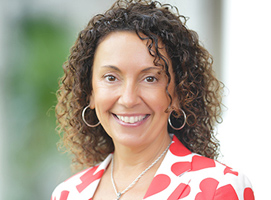enrollment
Flipping college marketing communications with prospective students

Colleges spend enormous amounts of money, time, and resources communicating with students through campus marketing. But are all those communications presented in a way that resonates with how today’s students learn and process information?
From the research we have conducted, the answer appears to be no. We have conducted many focus groups with prospective college students, sharing with them examples of college communication. In one instance, we showed them a brochure that had a question on the front—a question that they found thought-provoking and interesting. They looked inside, where the brochure proceeded to describe the experience of being a student at the college and the benefits of attending.
Here’s where we lost them: they wanted to know how they could answer the question that was asked on the front.
This example illustrates the change in how students learn today, and how they want to interact with campuses. After doing extensive research on current pedagogical and instructional strategies, we have discovered that adopting a flipped learning paradigm is the right step—or rather the right “flip”—for your communication strategy.
What is flipped learning and how has it changed how students process information?
There has been a revolution in student learning. Long gone are the days of the lecturing teacher and the passively listening students who were expected to absorb the lessons. Students need to be—and desire to be—engaged in debate and interaction for the content to stick. Enter flipped learning, a teaching concept that prioritizes student engagement.
When adopting flipped learning, teachers create lessons, lectures, and other traditional instructional content for consumption outside of class at the student’s preferred pace. Since direct instruction is delivered outside the traditional classroom, “teachers can then use in-class time to actively engage students in the learning process and provide them with individualized support.” (See this white paper on flipped learning, p.4.)
Research supports the key elements of the flipped model with respect to instructional strategies for engaging students in their learning. It has proven to improve students’ academic performance. (See Prince, 2004; Hake, 1998; Knight & Wood, 2005). Active learning has increased student engagement and critical thinking while improving student attitudes in general (O’Dowd & Aguilar-Roca, 2009). There is also evidence of flipped learning helping to develop students’ higher order thinking skills (Kharat et al, 2015).
How can the flipped learning paradigm apply to college marketing strategy?
As we continue to develop communication to engage a high school audience, we need to embrace the fact that this group needs to discuss, needs to debate, and needs to express its opinion in order to retain and remember information.
At its core, flipped learning provides the opportunity to employ key active learning principles like analysis and evaluation more often. In the classroom, students ask questions, answer questions, and receive valuable feedback in real time. We want to mimic this engagement process and their desire for interaction as much as we can.
Instead of engaging students in this fashion, colleges tend to tell students why they might be the right fit and what their institution has to offer the student. Rarely do students have an opportunity early in the process to say what they are looking for or why they think they might be a good fit for the school. This is the flip in the communication strategy—providing an opening for the student to share back to the college and engage in a truly two-way conversation. We believe that this flip will lead to better engagement and ultimately more of the right students finding the right college.
How can campuses flip communication with prospective college students?
- Engage higher order thinking skills. Simply asking a prospective student to remember something about a campus will yield less than 7 percent content retention. Asking a student to analyze a message and create a response will yield upwards of 80 percent content retention. (See here for discussions of content retention.) That has considerable potential for students retaining key messages about your institution.
- Give students the opportunity to start a conversation. Campus response forms currently gather basic information about a student. With a flipped communication approach, those forms allow the student to ask questions, say what they want from a college, and start a unique and personalized conversation with the institution.
- Create digestible, meaningful, and transparent messages that meet expectations. Understanding what someone expects to see when they open an email or letter is the first step to increasing engagement. Once we have their attention, we must deliver information in small doses that is relevant to interests and the process at hand.
So why flip communication with prospective college students?
First, existing communication strategies could be more effective. As the increase in stealth applications shows, students are less and less compelled to respond to college communications. Is it because they are not learning in the way they prefer or allowed to really engage a campus? Are they asking, “What’s in it for me?” and not seeing much reason to respond instead of simply opening a browser and researching an institution on their own terms?
By flipping communication, you can spark engagement and create a deep and meaningful conversation with the student. You can ask students the right questions and give them a chance to develop answers, share other questions, and tell your campus from the beginning what interests them and what they want to know.
Real-time feedback is not just valuable for students, but also for institutions of higher education as well. Imagine if you had a clearer understanding of what a prospective student liked about your institution and what they were unsure of or had questions about. By flipping communication and seeking that engagement, you can start a conversation that pulls the student in and has the potential to be truly customized.
Do you have any questions and ideas about flipping communication or how you can make stronger connections with students through your communication with prospective students? Email me and let me know, or leave a comment below.
